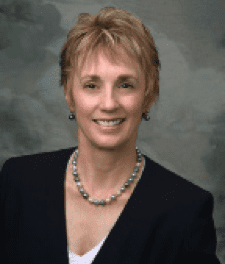Ask six hearing care professionals for six top business practices and you may get six different responses. Still, there are solid areas of agreement, with the top of the list often leaning toward the preeminence of clinical care. Without great care, all the business acumen in the world will not be enough.

“When we think of top business practices, we must remember that these are inseparable from top clinical practices,” confirms John Greer Clark, PhD, professor emeritus in the Department of Communication Sciences and Disorders at the University of Cincinnati. “Providing the best services that we can deliver is a key to practice differentiation, and it’s fundamental to good marketing.”
According to Clark, surveys repeatedly show that large percentages of audiologists do not routinely provide established best-practice clinical services such as: exploring hearing loss impact through self-assessment measures and speech-in-noise testing; objectively evaluating hearing aid performance in a hearing aid test box and through real-ear measurement; investigating alternative technologies to address situational difficulties that hearing aids cannot address; and having meaningful discussions of necessary communication management techniques for success.

Dawn W. Heiman, AuD, owner/founder of Advanced Audiology Consultants LLC in Woodridge, Ill, agrees that too many audiologists fail to follow best practices. In her top-6 best business practices, Heiman starts with the importance of great care and stays with the theme, ultimately making the case that care is overwhelmingly the business. Finally, she rounds out her list with a nod to the value of financing options, like those offered by Ally Lending, that allow patients to pay for products and services affordably over time.
The following is Dr Heiman’s Top-6, along with reasons for each choice.
#1) Have a strong practice mission. “Your why should carry you through the tough times,” says the 45-year-old Heiman, who also founded EntreAudiology. “Your why must be bigger than ‘We want to sell hearing aids and we want to keep our lights on.’ It’s more about caring for someone else and the passion you put into it…When you hit times like Covid, you have no problem showing up even if you are not getting paid. You have no problem finding innovative ways to meet your patients’ needs, even though it’s difficult and you’re wearing masks or running out to patients’ cars in the pouring rain. You’re doing it because you know they need to hear. You need buy-in from your practice, and you need a culture of people who believe in it.”
#2) Validate what you are doing. “That involves pre and post measures and testing people in noise before and after you fit them with hearing aids,” Heiman explains. “It involves functional questionnaires before and after treatment…It’s good to actually check in with measures that can be repeated at a later time. You need to find out if they are struggling. If they are getting worse, you need to figure out what to do so that person can have the best outcomes possible.”
#3) Use real-ear measurement (REM). “This is a way to verify that your hearing aid setting is appropriate for the patient,” says Heiman. “I’ve heard only 18% to 20% of all audiologists are actually using this, but it’s considered best practices by all of our academies…Patients will be happier and have better outcomes.”
#4) Have a distinct aural rehab program. “A structured program that helps take patients through a journey of going from where they are in terms of not being able to hear very well to where they want to be to hear in background noise situations or places where it’s more difficult to hear,” Heiman says. “It’s educating the person to use these new devices with this chronic disorder so they have the best experience possible. It’s a lot of education, reminding them of where to sit, how to turn on closed captioning, talking about using remote mics, and all of this in a written plan—or similar to my program I created in an online video. In our office, we have it printed so they can move along at a pace that lets them digest the information and makes it easier to learn something new.
#5) Provide a variety of hearing aid manufacturers with hearing aids that are not locked. “Some places will lock the software, so if you are not a part of their franchise or their buying group—and a patient suddenly moves—the new audiologist is not part of that group,” Heiman warns. “They might not be able to help them. It has happened to me.”
#6) Offer financing options for patients. “I think financing options are really important,” Heiman stresses. “If people need to hear, payment shouldn’t stand in the way of their getting treatment for this health condition. A lot of people in our office turn to financing and they are grateful for the flexibility and affordability it provides.”





